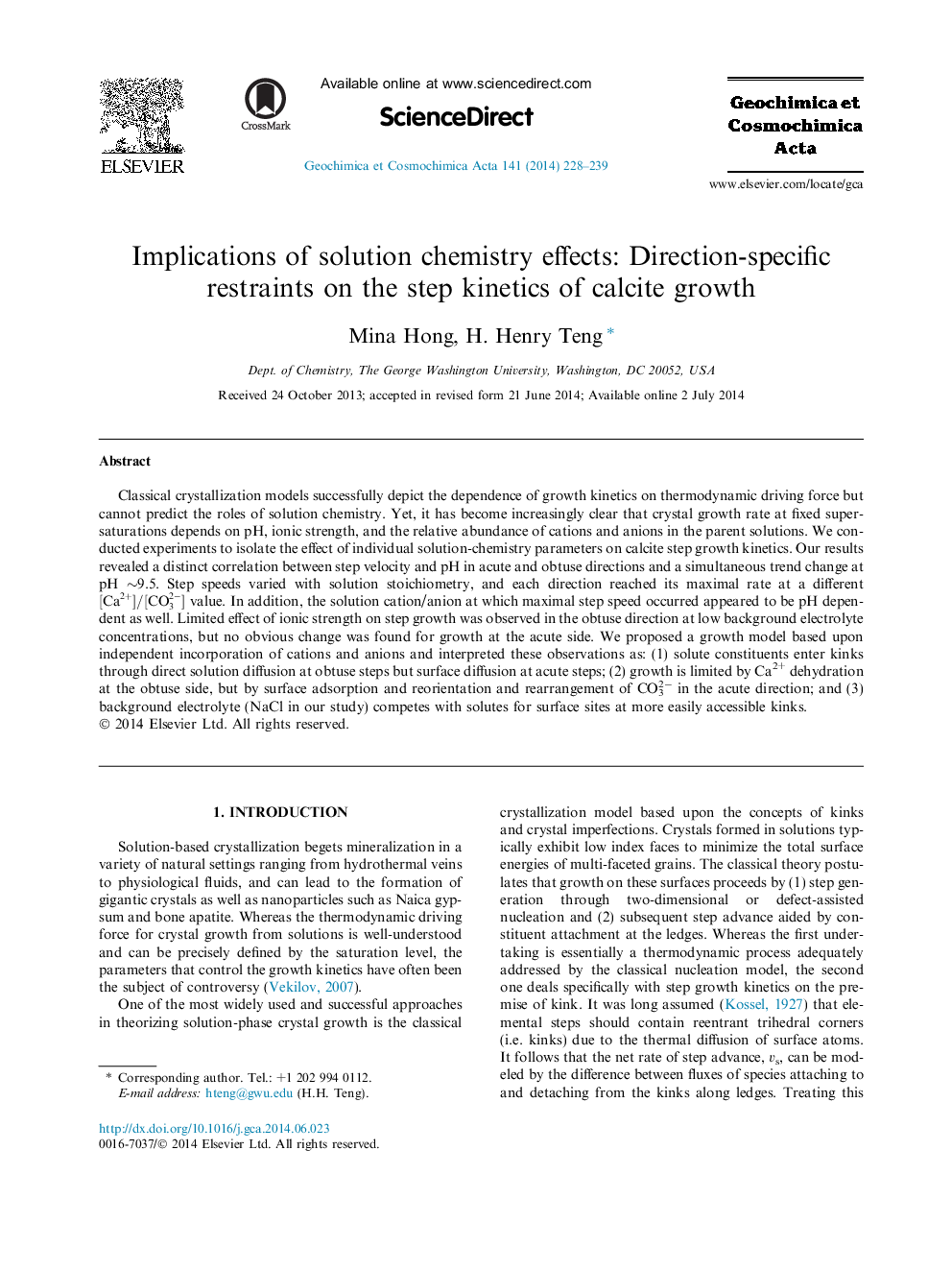| Article ID | Journal | Published Year | Pages | File Type |
|---|---|---|---|---|
| 6438217 | Geochimica et Cosmochimica Acta | 2014 | 12 Pages |
Abstract
Classical crystallization models successfully depict the dependence of growth kinetics on thermodynamic driving force but cannot predict the roles of solution chemistry. Yet, it has become increasingly clear that crystal growth rate at fixed supersaturations depends on pH, ionic strength, and the relative abundance of cations and anions in the parent solutions. We conducted experiments to isolate the effect of individual solution-chemistry parameters on calcite step growth kinetics. Our results revealed a distinct correlation between step velocity and pH in acute and obtuse directions and a simultaneous trend change at pH â¼9.5. Step speeds varied with solution stoichiometry, and each direction reached its maximal rate at a different [Ca2+]/[CO32-] value. In addition, the solution cation/anion at which maximal step speed occurred appeared to be pH dependent as well. Limited effect of ionic strength on step growth was observed in the obtuse direction at low background electrolyte concentrations, but no obvious change was found for growth at the acute side. We proposed a growth model based upon independent incorporation of cations and anions and interpreted these observations as: (1) solute constituents enter kinks through direct solution diffusion at obtuse steps but surface diffusion at acute steps; (2) growth is limited by Ca2+ dehydration at the obtuse side, but by surface adsorption and reorientation and rearrangement of CO32â in the acute direction; and (3) background electrolyte (NaCl in our study) competes with solutes for surface sites at more easily accessible kinks.
Related Topics
Physical Sciences and Engineering
Earth and Planetary Sciences
Geochemistry and Petrology
Authors
Mina Hong, H. Henry Teng,
